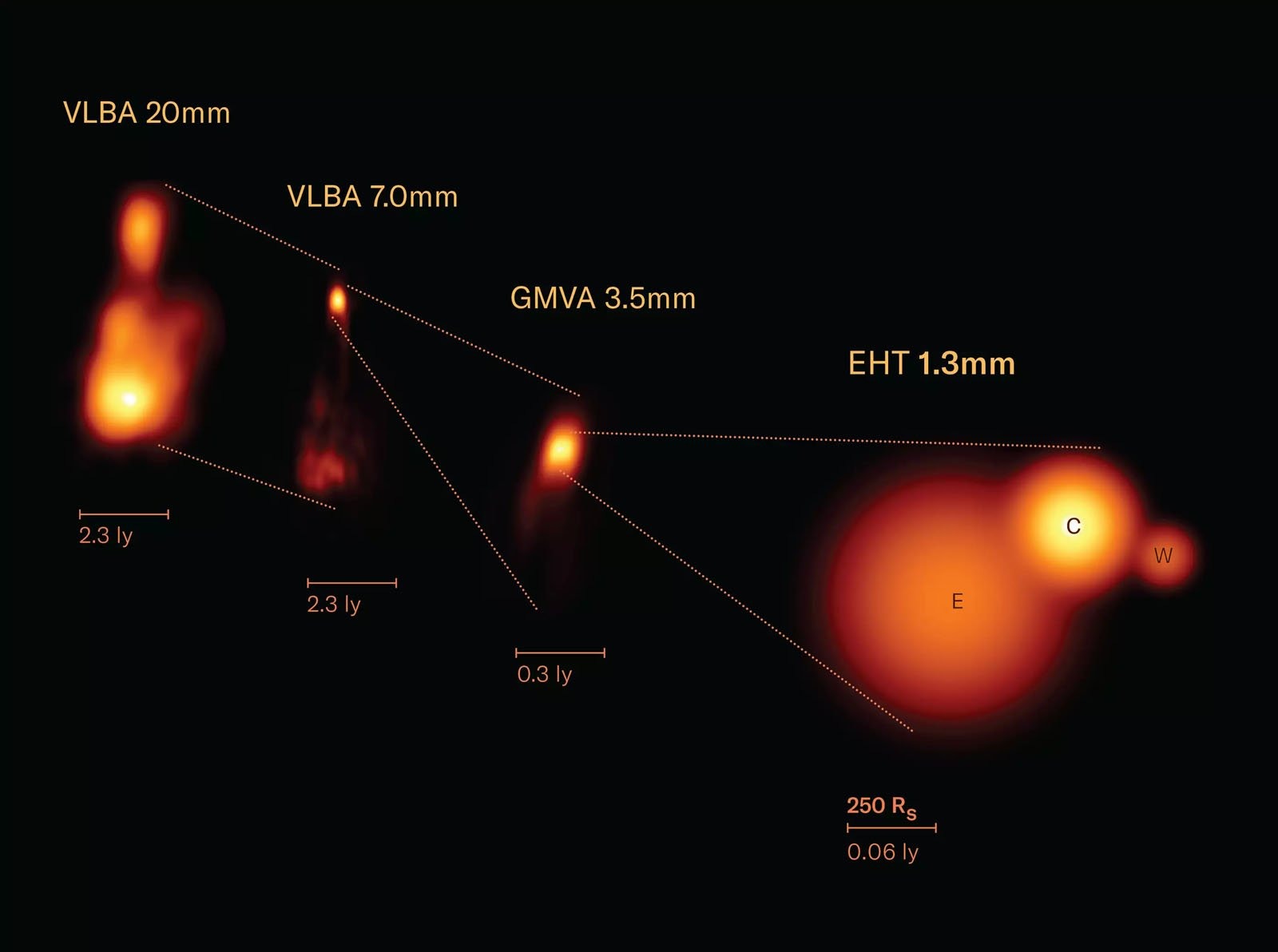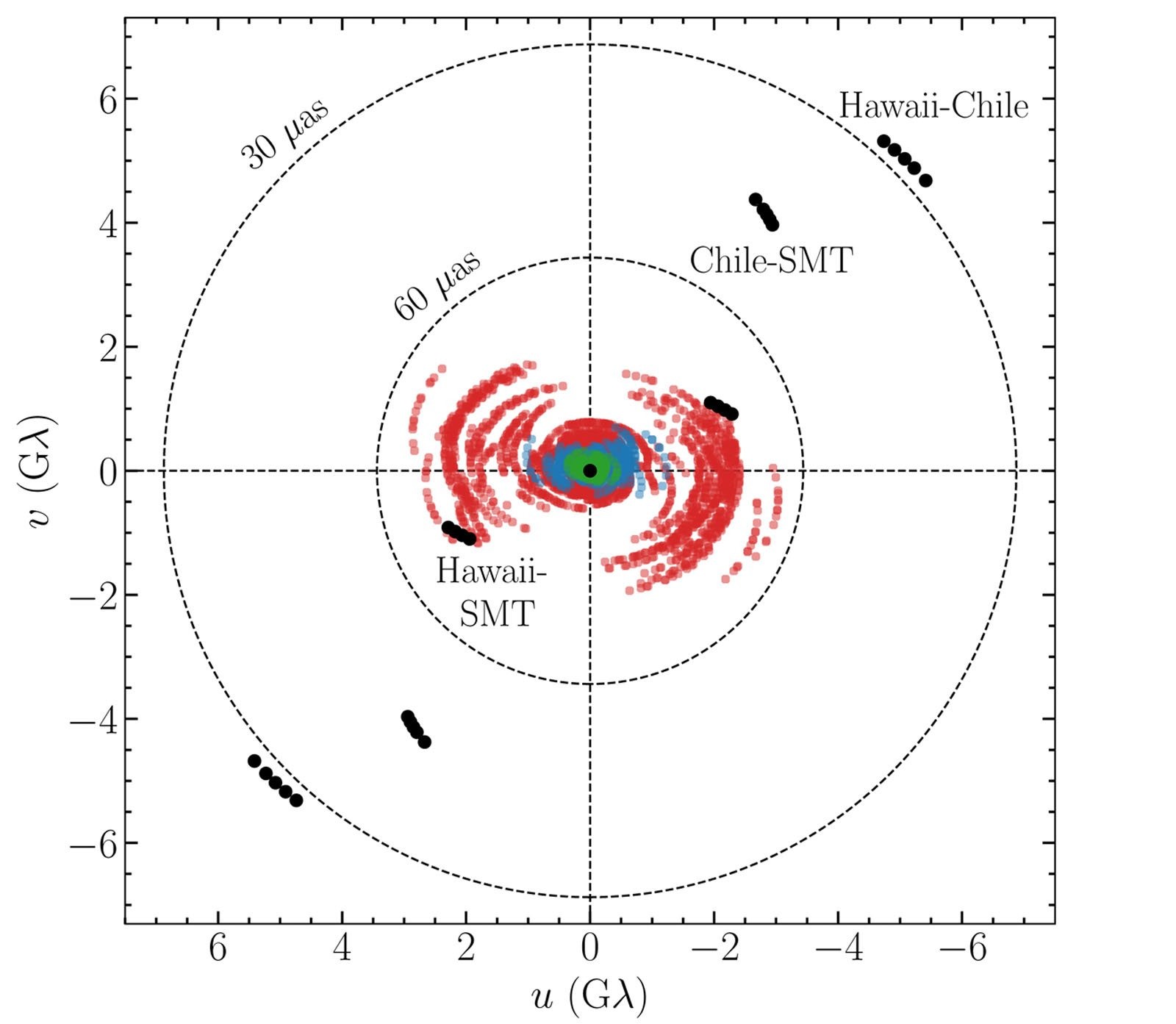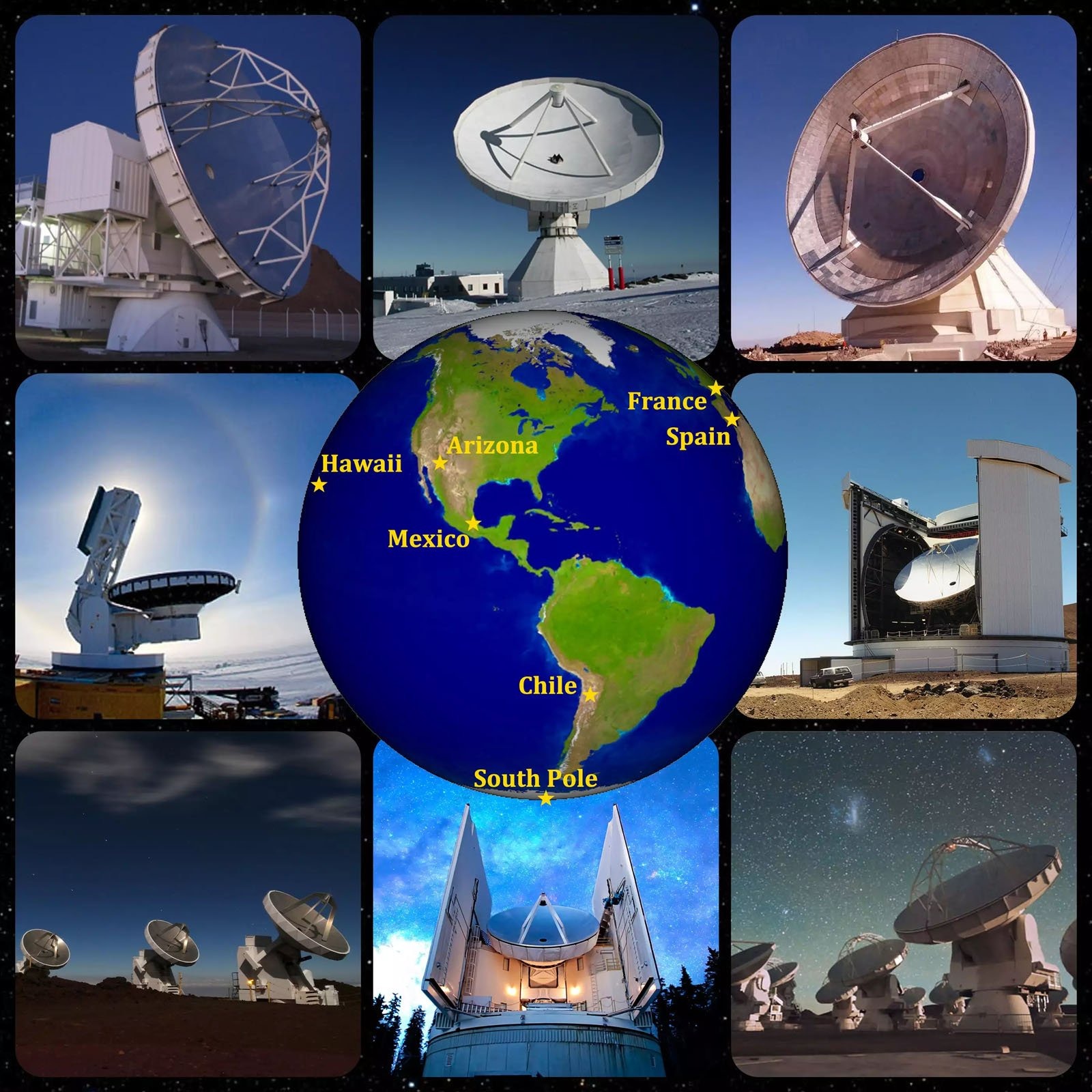The Event Horizon Telescope (EHT) collaboration and scientists from the Max Planck Institute for Radio Astronomy (MPIfR) in Germany used an array of Earth-sized radio telescopes to observe the reactive basis of a plasma jet from a supermassive black hole. Together with the study of jet, it turned out to be possible to use EHT to study the magnetic fields of black holes, and the results of these observations expand our understanding of the nature of these mysterious objects.

An international team of scientists used a planetary–scale telescope to analyze the magnetic structure of radio galaxy 3C 84, Perseus A – home to one of the nearest active supermassive black holes. Even at a distance of 230 million light-years from Earth, this black hole is of particular interest.
The results indicate that EHT can be used not only to obtain detailed images of supermassive black holes such as M87*, but also to study the magnetic fields of these objects. Magnetic fields are important for understanding how black holes attract matter and create powerful jets that can extend beyond galaxies.

Scientists have suggested that matter enters a supermassive black hole through advection, forming a magnetized disk. The study also confirms the rapid rotation of the 3C 84 black hole, which can affect the release of magnetic energy and emit plasma jets.
The images of the supermassive black hole M87* obtained by EHT indicated the direction of light as it orbits the black hole. The linear polarization of light gives an idea of the main magnetic field. In the case of the 3C 84 black hole, the strong linear polarization indicates a powerful magnetic field that determines the motion of plasma jets emitted by the black hole.
The properties of these jets are important because they demonstrate the strength of magnetic fields compared to the gravitational force of a black hole. Understanding the interaction of gravity and magnetic fields is important for solving the mysteries of black holes and their influence on the evolution of galaxies.

Using the Event Horizon Telescope network, the array of which creates a powerful “eye” with the diameter of the Earth, allows scientists to observe the energy sources of supermassive black holes and consider the distribution of energy in a distant galaxy. This is important for understanding the effect of black holes on the surrounding outer space. The results of the study are a significant step towards uncovering the mysteries of supermassive black holes, and they may point to new prospects in the development of astrophysical theories.
Earlier, we reported on how Ukraine has its own analogue of the Event Horizon Telescope.
According to space.com
Follow us on Twitter to get the most interesting space news in time
https://twitter.com/ust_magazine


